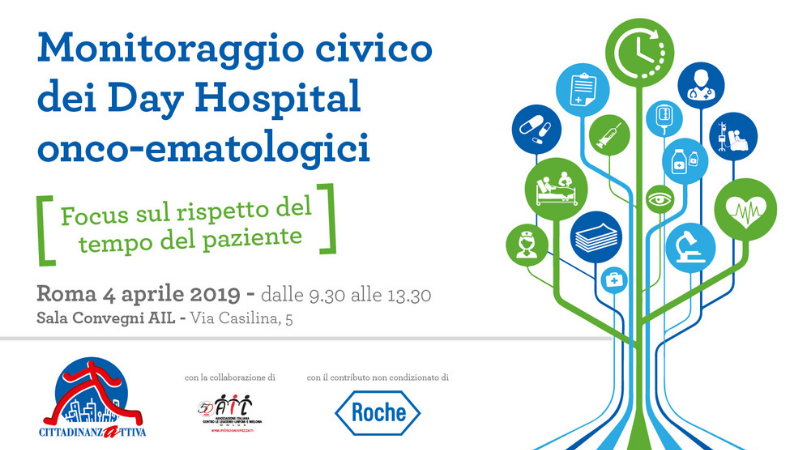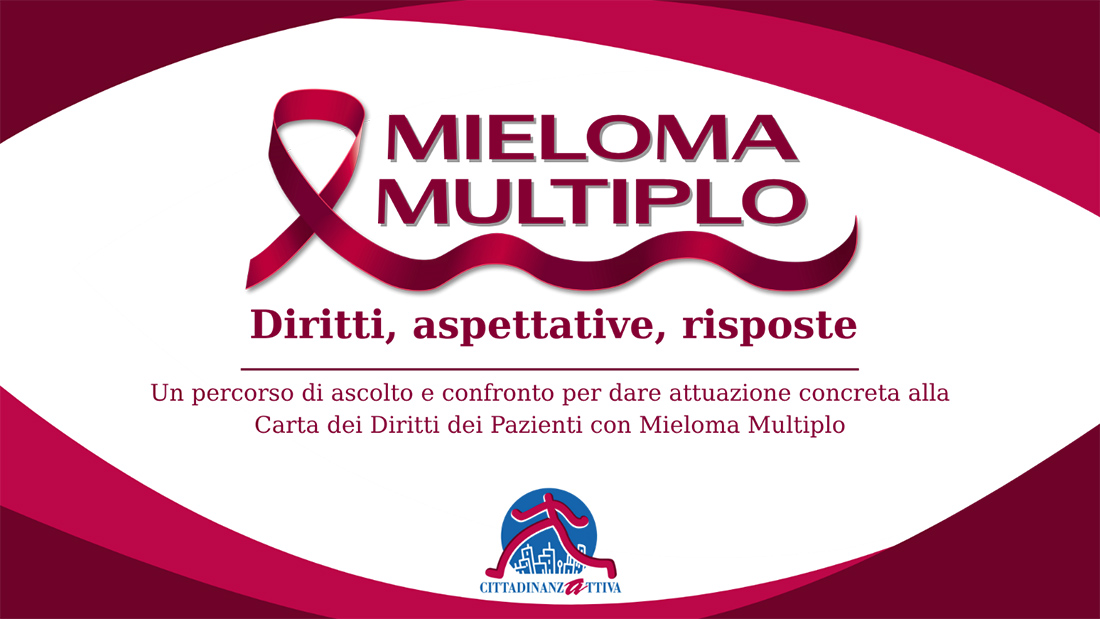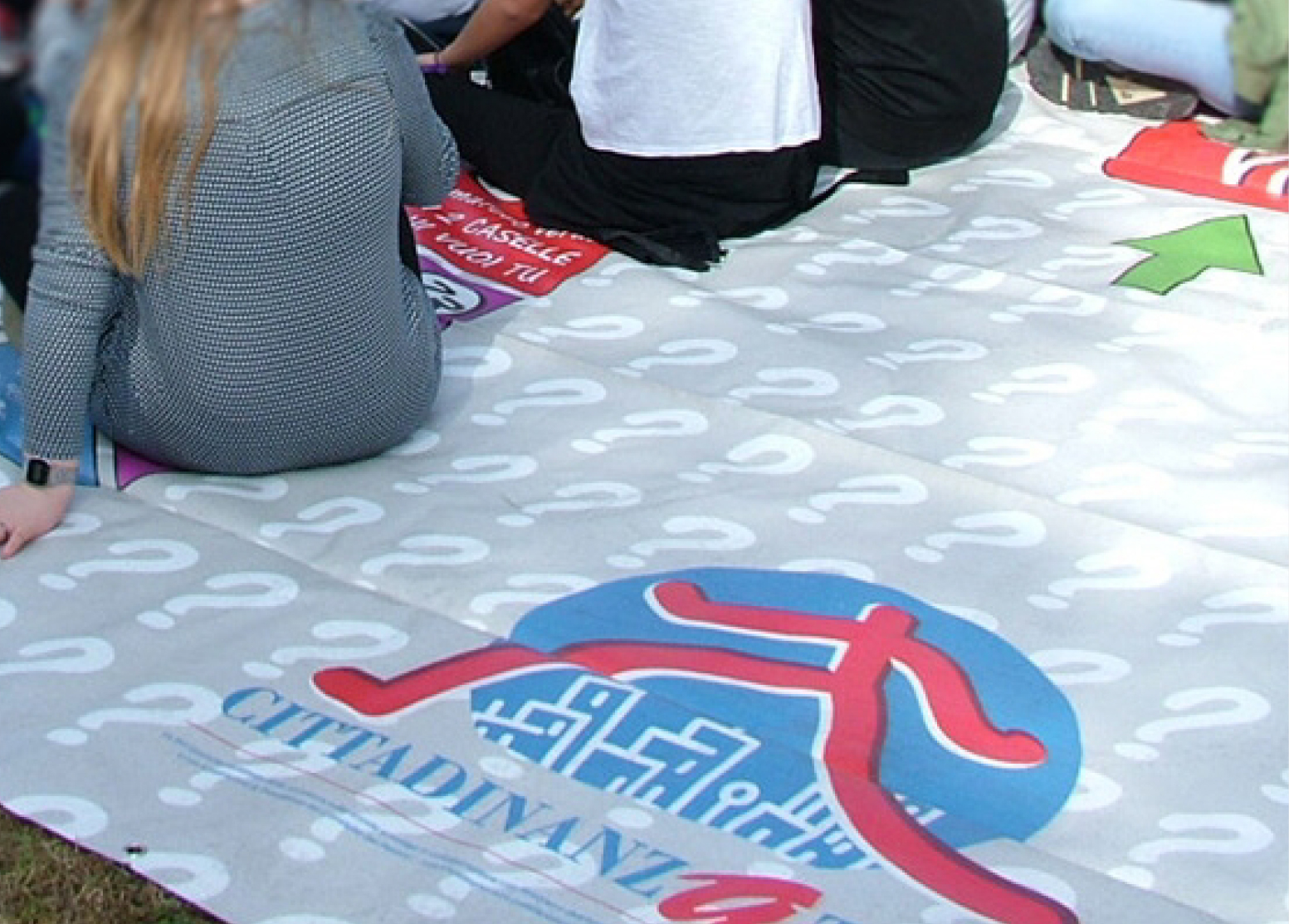
Onco-hematological Day Hospitals: the patients positively judge the provided service, critical of waiting times up to 8 hours and of poor planning. Investing in organization and computerization is necessary.
Waiting times up to 8 hours, inefficient service organization, poor computerization, but satisfaction for the professionalism and humanity of health care workers who work in onco-hematological Day Hospitals and for the overall quality of the provided services. This is the picture that emerges from the monitoring of 46 onco-hematological Day Hospitals advocated by Cittadinanzattiva- Court for the rights of the patients, in collaboration with AIL, presented today in Rome and carried out thanks to the unconditioned support of Roche.
“Too many times we have heard that the patient must be put in the center. Today’s research confirms the reports we receive daily, and demonstrates once again that there is a long road ahead. Starting from the use of technologies”, states Antonio Gaudioso, General Secretary of Cittadinanzattiva. “In the 21st century it cannot be accepted that platforms are used only for booking appointments, without fully benefitting from their potential. But in general, it is the organization of the service that arises as being focused on one’s own needs and not on those of the patients. Useless and easily reducible waiting times, little respect for the quality of patients’ life, referral from a specialist to another, and little information are all different sides of the same issue, that is the distance that still exists for the patient to feel at the center. Citizens’ organizations can represent the added value in the solution of the difficulties that have emerged”.
“Analyzing the data as a whole, it clearly emerges that the quality and, often, the excellence of the services is almost exclusively left to the commitment of the medical and nursing staff, whom also strives to substitute the profound organizational shortcomings of the facilities and of the health care bureaucracy, privileged by the “administrators” over patient assistance. It is essential a concrete intervention to update paths, procedures and structures from whomever has the power and duty to take care of them, giving back to health care professionals –doctors, nurses, etc.- the possibility to take care of patients from a care-giving point of view”, says AIL.
The patients have positively judged the information received on the health treatment process obtained during their first visit (88%), and on the possible repercussions on the quality of life. The professionalism of the health care staff and the humanity of all the health care workers is the most qualifying aspect of onco-hematological Day Hospitals according to 85% of the patients.
Positive also the times related to the start of chemotherapy, delivered to all patients within 30 days.
Attention to patients’ needs: partially rejected
Over 36% of Day Hospitals do not have a service orientation activity, where most of the information is communicated verbally or posted on the bulletin board; only in 46% of the cases the printing of specific brochures/leaflets is provided.
The worse situation arises on the front of the aid for administrative practices: although it is a form of support widely foreseen in DH, work still must be done in order to really make it a guaranteed practice in all facilities, since 4 people out of 10 claim that they have not received it. In particular, a difficulty in facilitating practices for having prostheses and aids emerges. (72%).
Furthermore, although 80% of Day Hospitals claim to have activated a phone service to manage any critical issues felt by patients in the management of the disease or therapy (side effects, doubts about medicines to take at home, etc.), the latter criticize the quality and timeliness: barely enough for 22% of the patients and poor for more than the 7%. The opening hours of the service is reduced, often it is not open during the afternoon hours and it is not constantly monitored because it is managed by a small number of workers already overloaded of other work.
15% of patients declare that “white” prescriptions have been issued by the facility’s specialists, without any direct reservation of the visits and control services as instead requires the taking care of the patient. This practice weighs on the patient since he must necessarily refer to the family doctor for the prescription and later on refer to the CUP to take an appointment. It often happens that, within the prescription, doctors do not specify the priority class and this further complicates the actual delivery of the service within the time needed by the patient.
The endless waits for therapy
The time required to perform the drug therapy goes from a minimum of 1 hour up to 9 hours. The greater frequency of hours of stay concerns a waiting time of 3-4 hours (43%) and from 5 to 6 hours (28%). More than 8% report staying up to 8 hours in total.
Almost 80% of the facilities use software, however it is mainly used to manage the appointment agenda. Far lower percentages are identified for organizing appointments based on the type of treatment (71,4%) and even less based on the duration criterion (57%).
Still contained is the percentage of facilities able to trace down the path of the single patient during the various phases of the day and also record the average execution time, in order to have precise data on the time of the process the patient has to go through and verify any critical issue and reducible times. Even fewer are the facilities which use the data gathered to initiate path improvement actions.
Regarding the organization of appointments, more than 13% of the facilities declare to call all patients at the same time without distinguishing between the type of therapy, long or short, they will have to undergo. Most of DH provide for the separation of the paths for control exams from those for the administration of the therapy, but even in this case, several facilities (over 13%) make no distinction, gathering all patients regardless of the purpose for which they are called. Moreover, more than 90% of DH affirm that there are delays in making the medicine available to the patient, mainly due to organizational dysfunctions.
Over 26% of patients retain that in the phase before the administration of the therapy there is a lot of downtime that could be improved and reduced. In 25% of the cases it is the waiting time for the blood test that is considered excessive and a downtime. The waiting time for the visit also results critical (15%); this phase is preceded by the reporting of blood tests, a phase that requires, together with the preparation of the medicine, the longest time.
Above all, it is the waiting for the therapy, that is the time that goes from the visit to the entrance to the administration room that is considered to be the one in which greater downtimes can be seen (50%). Of this time, it is in particular the waiting for the chair to become free (35%) that is perceived as a downtime. Patients often notice free chairs without any patient going over; as a matter of fact, more than 80% do not even use software to organize the administration shifts.
(document translated by Maira Cardillo, ACN staff)












